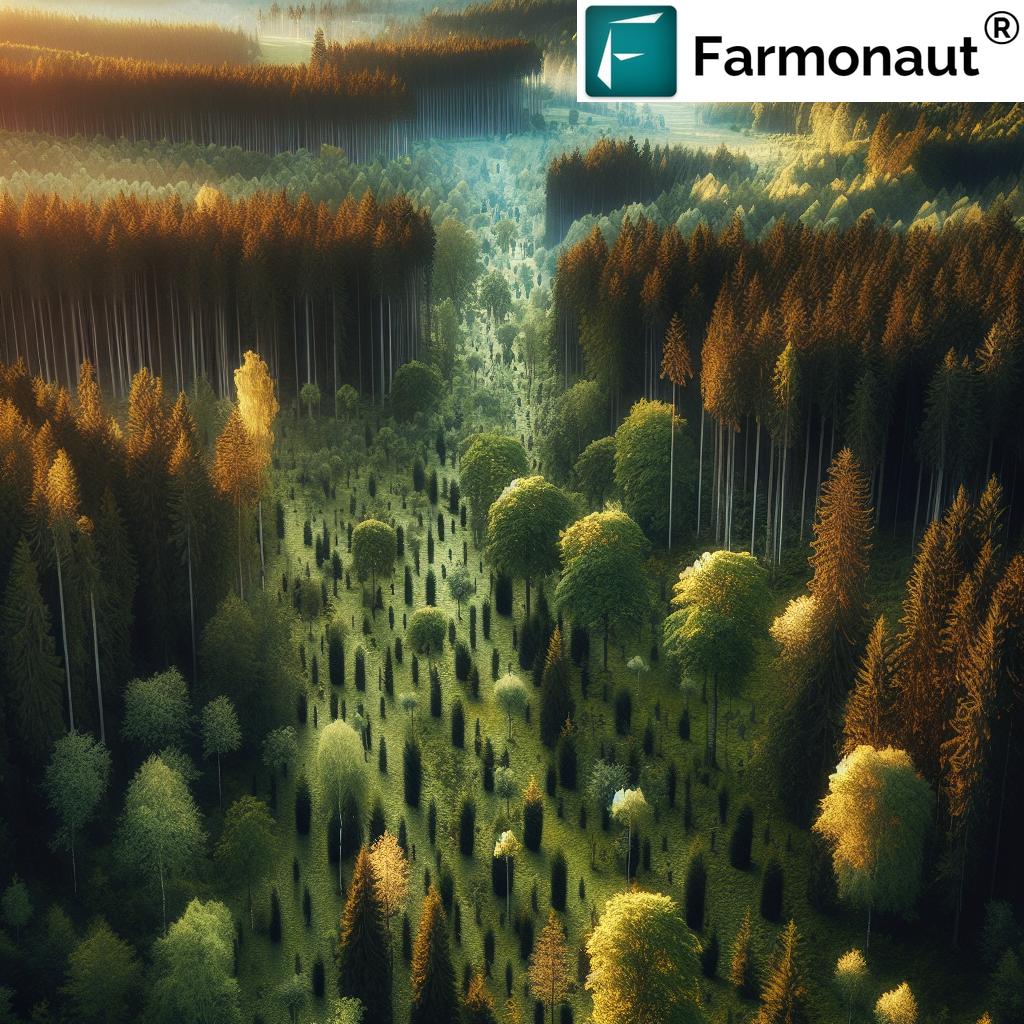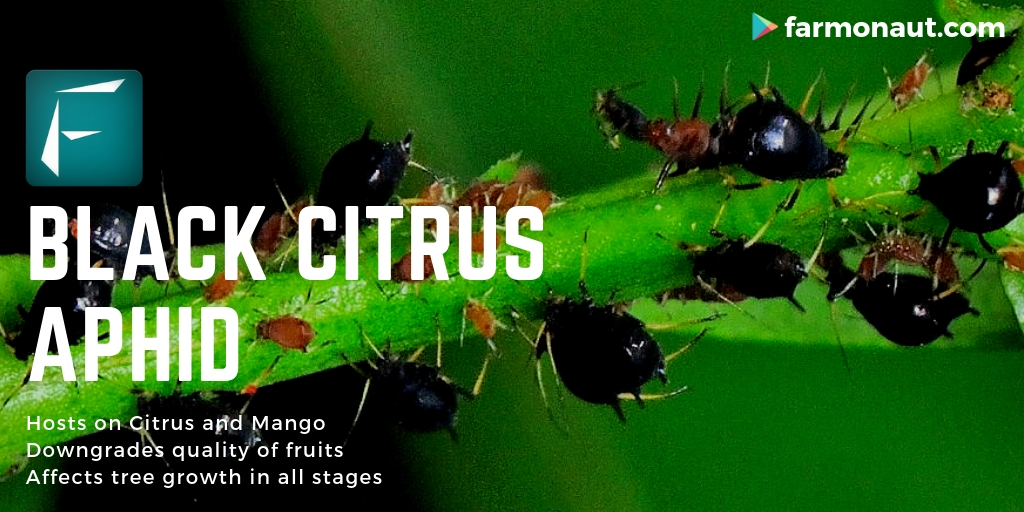Forestry Innovation: 7 Game-Changers You Must See Now!
Meta Description: Discover how forestry innovation, smart forestry technology, and sustainable forest management strategies are enhancing resilience, growth, and climate adaptation. Explore 7 game-changing advancements in this comprehensive guide.
Table of Contents
- Forestry Innovation: An Overview
- Game-Changer 1: Artificial Intelligence & Big Data Analytics
- Game-Changer 2: IoT for Smart Forestry
- Game-Changer 3: Drones and Remote Sensing
- Game-Changer 4: Blockchain in Timber Supply Chain
- Game-Changer 5: Agroforestry Practices
- Game-Changer 6: Adaptive Strategies for Climate Change
- Game-Changer 7: Community & Policy Initiatives
- Farmonaut’s Satellite & AI Solutions for Sustainable Forestry
- Comparison Table of Forestry Innovations
- Frequently Asked Questions
Forestry Innovation: An Overview
Forestry innovation encompasses an ever-expanding range of advancements aimed at enhancing forest management, promoting sustainability, and addressing environmental challenges like climate change, forest degradation, and biodiversity loss. Today, forestry and sustainable forest management are propelled by an ecosystem of technological innovations, new data-driven practices, integrated land use strategies, and adaptive approaches. Our forests present both challenges and opportunities: with climate and ecological pressures mounting, but technology, data, and innovative forestry practices opening new frontiers for resilience, growth, and climate adaptation.
In this comprehensive exploration, we’ll delve into the transformative technologies, strategies, and practices that define forestry innovation today. From AI and smart forestry technology, remote sensing, and blockchain, to integrated agroforestry practices, climate change adaptation, and emerging policy, every angle is covered for a complete understanding.
Why Forestry Innovation Matters Now
- Climate: Forests absorb 2.6 billion tonnes of carbon dioxide annually, acting as a frontline defense against climate change.
- Biodiversity: Healthy forests are home to over 80% of all terrestrial animal, plant, and insect species.
- Resilience: Innovative forest management bolsters ecological and community resilience in the face of increased pests, diseases, and extreme weather.
- Economic Viability: Sustainable practices and technologies foster growth and long-term economic value from timber and non-timber forest products.
- Transparency: New technology bolsters trust and traceability from forest to consumer.
Our Lens: Covering the Full Range of Innovation
We explore the full range of forestry innovations—from satellite-based monitoring and large scale forest management, to adaptive climate change strategies and carbon footprinting. Our approach blends hard, technological advancements with real-world, sustainable management and adaptive approaches—offering decision-makers, practitioners, and policymakers a roadmap for resilient forest futures.
Game-Changer 1: Artificial Intelligence & Big Data Analytics in Forestry Innovation
Revolutionizing Forest Decision-Making with Data-Driven Insights
The fusion of artificial intelligence (AI) and big data analytics is accelerating the transformation of forestry management. We can now analyze massive, multi-source datasets—from satellite imagery, remote sensors, and climate models, to historical forest health records—using advanced AI algorithms. This enables a new era of intelligent, predictive, and proactive forest management.
- Predict Trends: AI models analyze large datasets to forecast trends in forest growth, carbon sequestration, pest/disease spread, and fire risks.
- Plan Proactively: This predictive capability enables targeted pest control, optimized thinning operations, and efficient allocation of resources for maximum forest health.
- Monitor Carbon Sequestration: AI-driven analysis supports precise measurement and tracking of carbon sequestration in forests, essential for both climate accounting and biodiversity credit markets.
- Efficiency & Cost Savings: By identifying high-priority intervention zones and optimizing workflows, forests are managed more efficiently and sustainably than ever before.
Farmonaut leverages artificial intelligence along with multi-band satellite data for automated tree detection, forest cover monitoring, soil health analysis, and real-time advisory for forest health monitoring, all accessible in a scalable, modular platform.
To integrate the power of AI and analytics into your operational landscape, explore the Carbon Footprinting and API Developer Docs for advanced decision-support and remote forest analytics.
Game-Changer 2: IoT and Smart Forestry Technology
Forest Monitoring with IoT Sensors & Remote Data
The Internet of Things (IoT) is enabling the rise of smart forests—digitally connected landscapes where sensors provide real-time measurements of environmental conditions.
- Environmental Parameters: IoT sensors monitor key factors: soil moisture, temperature, tree growth rates, canopy humidity, and light conditions—delivering immediate updates on forest health.
- Precision Forest Health Monitoring: With smart sensors distributed throughout forests, we gain a comprehensive, real-time view of growth, stress, water status, and potential threats.
- Early Fire Detection: Sensors can detect subtle changes in air composition (smoke, CO2), temperature spikes, or moving fire fronts, sending alerts to managers and enabling proactive fire suppression.
- Resource Optimization: By integrating live sensor data with management practices, resources (like irrigation and fertilization) are deployed exactly where and when they’re needed.
Farmonaut’s platform integrates remote satellite sensing and on-the-ground sensor analytics, empowering management teams to achieve high forest productivity and tree health.
Game-Changer 3: Drones and Remote Sensing for Forest Management
Elevating Forest Intelligence with Advanced Aerial Technology
Modern drones—equipped with high-resolution cameras, thermal imagers, and LiDAR sensors—offer aerial perspectives that transform forest management. Our ability to collect topographical, structural, and biological data at scale is fundamentally improved by these technologies.
- Detailed Mapping: Drones offer precise data about canopy coverage, tree density, and spatial structure, critical for inventory and planning.
- Plant Health Monitoring: Thermal and multispectral drone imaging reveals early stress, disease, or pest outbreak, allowing proactive interventions.
- Fire and Disaster Assessment: Rapid, aerial post-disaster scans provide actionable intelligence for recovery and resilience strategies.
- Wildlife & Biodiversity: Drones non-invasively monitor sensitive areas, minimizing ecological disturbance while gathering essential metrics.
- Cost & Efficiency: Drones reduce the need for manual surveys, generating consistent, accurate data at a fraction of the cost and risk.
When drone data is integrated with Farmonaut’s satellite-powered forest monitoring, the result is truly data-rich, actionable forest intelligence—powering both sustainable management and enhanced resilience.
For those looking to scale remote sensing and drone data into forestry operations or research, try Farmonaut APIs to unlock high-frequency satellite analytics and integrate them into custom applications.
Game-Changer 4: Blockchain in Timber Supply Chain for Transparency & Traceability
Building Trust and Accountability in the Timber Industry
The use of blockchain technology in forestry is fundamentally transforming how the world regards timber supply chains, enabling transparency from forest to finished product. Blockchain’s immutable ledgers document every stage: harvesting, processing, transport, and sale.
- Authentication: Blockchain assures consumers, governments, and businesses that forest products are harvested legally and sustainably.
- Supply Chain Transparency: Every transaction, quality check, or movement is digitally recorded—a safeguard against illegal logging and fraud.
- Compliance: Systems built on blockchain ease compliance with international timber regulations, such as CITES and FLEGT.
- Brand Value: Certified, traceable wood enhances product value with sustainability-conscious consumers and businesses.
Farmonaut’s Blockchain-Based Product Traceability solutions offer a robust way to ensure supply chain accountability—for timber, food, textiles, and more. By enabling traceability from origin to end-user, sustainable management is verified, not just promised.
Game-Changer 5: Agroforestry Practices—Integrating Trees with Agriculture
Enhancing Productivity and Biodiversity with Integrated Systems
Agroforestry—the integrated management of trees, crops, and sometimes livestock—unleashes a range of economic, ecological, and climate benefits. This system bridges the gap between forestry and agriculture, reimagining rural landscapes as multifunctional and resilient.
- Ecological Diversification: Agroforestry systems increase plant biodiversity, supporting pollinators, controlling erosion, and enriching soil health.
- Productivity Boost: Integrating trees on croplands can improve yields by up to 30%, enhance micro-climates, and provide shade and windbreaks.
- Climate Resilience: Trees increase soil water retention, buffer temperature extremes, and sequester carbon, crucial for climate adaptation.
- Sustainable Returns: Provides diverse income streams from timber, fruit, fodder, and fuel, reducing risks for farming communities.
Specific agroforestry practices include alley cropping, silvopasture (trees with livestock), windbreaks, and Farmer-Managed Natural Regeneration (FMNR). These integrated systems support the Sustainable Development Goals by tackling poverty, hunger, and climate hazards simultaneously.
For guided agroforestry planning, satellite-based advice, and resource optimization, use Farmonaut’s Crop Plantation & Forest Advisory to maximize ecological and economic returns from integrated land use.
Game-Changer 6: Adaptive Strategies for Climate Change
Building Forest Resilience in an Uncertain Climate
Climate change presents unprecedented challenges for forests everywhere. As stewards of these critical ecosystems, we must adopt adaptive strategies for climate change to safeguard forest health and productivity.
- Assisted Migration: We may need to relocate tree species to regions where climate conditions will remain suitable in coming decades, preserving biodiversity and ecological function.
- Genetically Modified (GM) Trees: Genomic advancements allow breeding or engineering of trees with enhanced growth, disease, pest, and drought resistance, and higher carbon sequestration rates. For instance, GM poplars are already deployed for reforestation and carbon capture projects.
- Restoration & Regeneration: Practices like Farmer-Managed Natural Regeneration (FMNR) (reviving trees from existing rootstocks/stumps) boost recovery, resilience, and ecosystem service provision at low cost.
Ultimately, adaptive innovations—when embedded into sustainable forest management—make our forests and communities more resilient, productive, and climate-proof for the long haul.
Game-Changer 7: Community and Policy Initiatives
Collective Action—The Human Dimension of Forestry Innovation
No forestry innovation thrives without supportive policy frameworks and active community engagement. People and enabling policies are the backbone of scalable, on-the-ground change.
- Community-Based Forestry: Empowering local communities to participate in, benefit from, and steward forest resources ensures sustainable management and equitable benefit-sharing. Models like farmer cooperatives, forest user groups, and smallholder-based supply chains have shown tremendous success in practice.
- Policy Support and Funding: Policy initiatives—such as expanded funding for agroforestry, recognition of ecosystem services, and incentives for sustainable practices—enable the rapid adoption of innovation at landscape scale.
- Knowledge Sharing: Training, technical assistance, and digital advisory platforms close knowledge gaps, equip frontline actors, and bolster continuous improvement.
To stay at the forefront of forestry innovation, explore Farmonaut’s satellite-based verification tools for crop loans and insurance, ensuring equitable access and transparency in forest-adjacent rural economies.
Farmonaut’s Satellite & AI Solutions for Sustainable Forest Management
As technology rapidly evolves, our ability to manage, monitor, and enhance forests is supercharged by platforms that integrate multiple innovations—satellite data, AI, blockchain, IoT analytics, and advisory intelligence.
Farmonaut stands out for offering holistic and cost-effective solutions tailored to multiple needs in forestry management:
- Satellite-Based Forest Health Monitoring: Gain real-time, multispectral analytics on vegetation health, soil moisture, forest stressors, and growth.
- AI-Based Advisory for Forest Health: Receive actionable, customized guidance for disease, pest, and fire management, enhancing productivity and reducing risk.
- Blockchain Traceability: Document and verify forest product origin, legality, and sustainability throughout the supply chain for timber, agricultural, or textile-based industries.
- Carbon Footprinting: Track, quantify, and report carbon sequestration in forests for climate compliance and carbon credit programs.
- Fleet & Resource Management: Optimize field operations, reduce vehicle use, and efficiently coordinate forest management activities.
- API Access: Seamlessly integrate remote sensing, monitoring, and analytics into your own custom forestry or agricultural applications. See full API developer documentation here.
All tools are accessible via Android, iOS, browser app, and API, making smart forestry technology and sustainability affordable and available globally. Try Farmonaut’s solutions now—empowering you for forest resilience, productivity, and long-term sustainability.
Comparison Table of Forestry Innovations
| Innovation Name | Technology Type | Estimated Adoption Rate (%) | Projected Growth Impact (% Yield Increase) | Climate Adaptation Benefit | Sustainability Score (1–10) |
|---|---|---|---|---|---|
| AI & Big Data Analytics | AI, Machine Learning, Satellite Data | 55 | 25 | High | 9 |
| IoT & Smart Forestry Technology | IoT Sensors, Remote Sensing | 43 | 30 | High | 8 |
| Drones & Remote Sensing | Drone Imaging, LiDAR, Geospatial | 35 | 22 | Medium | 8 |
| Blockchain in Timber Supply Chain | Blockchain, Traceability | 27 | 18 | Medium | 7 |
| Agroforestry Practices | Integrated Systems, Agroecology | 41 | 28 | High | 9 |
| Adaptive Climate Strategies | Genetics, Assisted Migration, FMNR | 21 | 17 | High | 8 |
| Community & Policy Initiatives | Policy, Community Engagement | 33 | 20 | High | 9 |
Note: Adoption rates and impact metrics are estimated figures subject to global and local implementation factors. All scores are derived from best practices in sustainable forest management and climate resilience.
Frequently Asked Questions (FAQ) About Forestry Innovation
1. What is forestry innovation, and why does it matter?
Forestry innovation means the development and application of new technologies, strategies, and practices in forestry to improve efficiency, sustainability, and resilience. It matters because innovative approaches help address the urgent challenges forests face—such as climate change, biodiversity loss, and resource depletion—while maximizing productivity and long-term ecological health.
2. How is artificial intelligence changing forestry management?
Artificial intelligence allows us to analyze massive remote datasets, predict forest health trends, and automate detection of disease, pests, or growth anomalies. AI-driven insights enable proactive, precise management interventions, directly supporting healthier, more productive forests and effective climate adaptation.
3. How does smart forestry technology work?
Smart forestry technology involves connecting IoT sensors, drones, and remote imaging tools to gather real-time environmental data, such as soil moisture, temperature, and tree growth. These systems provide valuable, location-specific insights that empower sustainable forest management.
4. What role does blockchain play in sustainable forestry?
Blockchain technology brings end-to-end transparency and traceability to the timber supply chain. Every step—from planting to logging and shipping—is digitally recorded and verified. This helps verify legal and sustainable sourcing, building trust and combating illegal logging or fraud.
5. How do agroforestry practices benefit the environment?
Agroforestry practices integrate trees with crops and/or livestock, increasing biodiversity, improving soil quality, reducing erosion, enhancing water retention, and boosting farm productivity—all while capturing more carbon from the atmosphere.
6. Can these innovations help fight climate change?
Absolutely. AI, IoT, adaptive planting, and restoration strategies collectively strengthen forests’ ability to absorb carbon, withstand climate extremes, and recover from disturbances. Tracking and optimizing carbon sequestration in forests is a critical part of this fight.
7. How does Farmonaut support sustainable forest management?
Farmonaut offers advanced, satellite-powered monitoring, AI-based advisory, blockchain-enabled traceability, and carbon accounting—all via web, Android, iOS, and API. The platform empowers decision-makers at all scales to boost productivity, sustainability, and transparency affordably.
Conclusion: Building Forest Resilience with Innovation
Forestry innovation sits at the intersection of technology, data, and sustainability. By adopting AI-driven analytics, IoT enabled monitoring, remote sensing, blockchain-proven supply chains, robust agroforestry practices, and adaptive strategies, our forests become more productive, resilient, and capable of facing future challenges. With organizations such as Farmonaut, these advances are affordable, accessible, and scalable—paving the way for a new generation of smart forestry management.
Now is the time for the forestry sector—governments, communities, businesses, and practitioners—to invest in these game-changing advancements. The outcomes are clear: enhanced resilience, increased growth, effective climate adaptation, and truly sustainable forest management. Let’s innovate for our forests’ future—today.












I just like the helpful information you provide in your articles